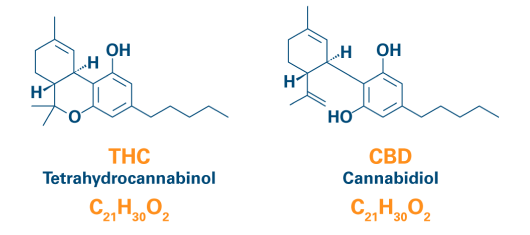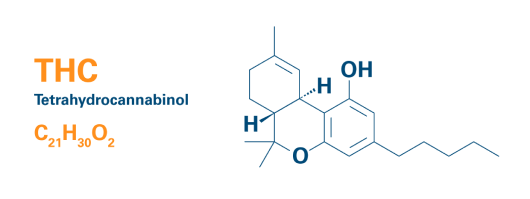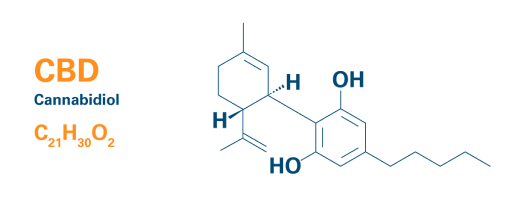WHAT
ABOUT MEDICINAL CANNABIS
If you would like to review some foundational information about medicinal cannabis, this is a good place to start. Here, you can learn about medicinal cannabis in general, including scientific information about cannabinoids and the body’s endocannabinoid system.
What is medicinal cannabis?
Cannabis is a plant. When the cannabis plant is mature, it produces an oil containing chemicals called cannabinoids. 1 These cannabinoids have a range of medicinal properties. This isn’t unique. In fact, more than 100 approved medicines are derived from a plant. 2 This includes some of the world’s most well-known medicines like aspirin (used for the treatment of pain, fever, and inflammation), morphine (pain), digoxin (heart failure), and paclitaxel (cancer). As an example, aspirin is modelled after salicylic acid, a chemical found in several plants, including Salix alba, the white willow tree. 3
Just like these plant-derived medicines, the term ‘cannabis-based medicines’ refers to any medicine that is based on cannabinoids extracted from the cannabis plant. Medicinal cannabis, on the other hand, differs from classical medicines and represents a novel category of medicinal products, with a unique regulatory framework. Medicinal cannabis uses cannabis flowers or extracts and makes them available in new pharmaceutical forms and with various concentrations and mixtures of the active substances. This allows physicians to leverage a more personalized medicine approach, which is especially useful for uncontrolled and intractable patients.
What are the main active substances in medicinal cannabis?
Over 500 compounds have been identified in the cannabis plant; about 100 are cannabinoids, while more than 400 are non-cannabinoids. 4 The two most researched and most used cannabinoids are Δ9-tetrahydrocannabinol (THC) and cannabidiol (CBD). 4 Medicinal cannabis products may contain primarily THC (THC-dominant), primarily CBD (CBD-dominant), or a balance of the two cannabinoids (balanced). 5

What are cannabinoids?
Cannabinoids are a group of chemicals produced by the cannabis plant. They share a common chemical structure. The cannabis plant contains over 100 cannabinoids. 4 The two most researched and used cannabinoids are Δ9-tetrahydrocannabinol (THC) and cannabidiol (CBD). 4 Other cannabinoids, which are normally present at low or very low concentrations in the cannabis plant, are being actively studied. 5 These other cannabinoids, including cannabidiravin (CBDV), cannabigerol (CBG) or cannabichromene (CBC), have shown pharmacological activity at a pre-clinical level. 4 Little is known about the potential therapeutic value of such compounds, considering their low concentrations in the plant and the very little available information about their action. 5 Much of our knowledge about these cannabinoids is derived from in vitro and in vivo studies and a limited number of well-conducted, rigorous clinical studies. 6
What is THC?
THC (or Δ9-tetrahydrocannabinol) is the primary psychoactive cannabinoid.7 Its pharmacological and therapeutic properties are intrinsically connected with the CB1 (cannabinoid receptor type 1; partial agonist) and CB2 (cannabinoid receptor type 2; partial agonist) receptors,7 while its psychotropic effects are typically mediated by CB2. The pharmacological properties of THC include suppression of locomotor activity, hypothermia, antinociception, appetite stimulation, and antiemesis.7 Beyond its activity at the CB1 and CB2 receptors, THC may also interact with other receptors, including TRPA1 (Transient Receptor Potential Cation Channel Subfamily A11 Member 1), TRPV2 (Transient Receptor Potential Cation Channel Subfamily V Member 2), GPR55 (G Protein Coupled Receptor 55), 5-HT3A (5-Hydroxytryptamine Receptor Type 3 Subunit A), and other receptors. 6

What is CBD?
CBD (or cannabidiol) is the second most studied cannabinoid. It does not have a direct action on CB receptors, like THC does, although it does act as a negative allosteric modulator of the CB1 receptor. 7
This is thought to be the mechanism by which CBD can mitigate some of the psychotropic effects of THC. The pharmacological properties of CBD include anticonvulsant, antinociceptive, anti-anxiety, antiemetic, immune-modulating, and anti-inflammatory. 7 CBD interacts with a range of receptors to elicit these properties, including TRPV1 (Transient Receptor Potential Cation Channel Subfamily V Member 1), GPR55 (G Protein Coupled Receptor 55), 5-HT1A(5-Hydroxytryptamine Receptor Type 1 Subunit A), 5-HT2A (5-Hydroxytryptamine Receptor Type 2 Subunit A), adenosine receptors A1 & A2, TNFα (Tumor Necrosis Factor Alpha), and other receptors. 8

What are endocannabinoids?
Endocannabinoids are the body’s endogenous cannabinoids, or ligands of the cannabinoid receptors. The two main endocannabinoids are anandamide and 2-arachidonoylglycerol (2-AG). Anandamide has high affinity for the cannabinoid receptors. It acts as a CB1 partial agonist and a CB2 almost inactive agonist, while also having some activity at the TRPV1 receptor. The second endocannabinoid discovered, 2-AG, is vital in the actions of the endocannabinoid system in the brain. It is the primary endogenous ligand for the cannabinoid receptors in the brain, having >1000x higher basal level than anandamide in the brain. It has moderate to low affinity for the cannabinoid receptors but is a full agonist at both CB1 and CB2. 9,10
These endocannabinoids are prominently involved in the suppression of synaptic transmission through multiple mechanisms, independent of synaptic nature (excitatory or inhibitory) and transmission duration. They are produced upon demand at the post-synaptic neuron and act retrogradely (at the pre-synaptic neuron or nearby astroglial processes). They are released in concrete areas of the brain and periphery according to specific stimuli. Recently, additional endocannabinoids have been discovered. 10
What physiological functions are regulated by the cannabinoid receptors?
The endocannabinoid system appears to be a homeostatic system that participates in many of the body’s most important physiological functions. CB1 is directly involved with motor regulation, control of appetite, memory and learning processing, energetic homeostasis, objective oriented behavior, and higher cognitive functions. CB2 is directly involved with regulation of inflammation and immune responses. 9 More recently, the concept of an endocannabinoidome was introduced to explain the whole world of cannabinoid-related ligands, receptors, and enzymes and their interactions, especially considering that endocannabinoids have more molecular targets than just CB1 and CB2, and that these receptors appear to extend also to proteins that are targeted by other endogenous and exogenous substances. 11
How are cannabinoid receptors distributed throughout the body?
CB receptors are ubiquitous and distributed widely throughout the human body. The CB1 receptors are found mainly in the brain, and less densely expressed in various parts, including adipocytes, leukocytes, spleen, heart, lung, GI tract, kidney, bladder, reproductive organs, skeletal muscle, bone, joints, and skin. The CB2 receptors are found mainly in the immune system, including the leukocytes and the spleen. They are less densely expressed in the bone, liver, and CNS, including astrocytes, oligodendrocytes, microglia, and some neurons. 10
What are the different types of cannabis plants?
Among botanists, there is still no definitive conclusion on how to classify the cannabis plant. Three species were initially proposed: Cannabis sativa, Cannabis indica, and Cannabis ruderalis. Cannabis sativa is the most used form in the West. It is a taller plant that is grown in warmer regions. In contrast, Cannabis indicais a shorter plant that is grown in cooler climates. Cannabis ruderalis is the smallest of the plants, but it grows the quickest, as it is not affected by day length to flower (i.e., auto-flowering). In terms of cannabinoid content, Cannabis ruderalis has the least THC but it can be high in CBD. However, over time, this classification system has been challenged, since all three types can inter-cross successfully and produce fertile hybrids, which contradicts the definition of species.
From a medicinal application standpoint, the division of the type of cannabis plant according to its morphological botanic characteristics is often vague and pointless. Rather, its division should be made according to the chemical profile, 12 which has resulted in three main types: chemovar I (THC dominant), chemovar II (a balance of THC and CBD), and chemovar III (CBD dominant). 13 Although these are the three primary plant ‘species’, many strains have been produced that combine features of one or more of the three species. For example, Cannabis ruderalis can be combined with Cannabis indica to produce faster growing plants (from ruderalis) with higher THC content (from indica).
What are the different types of medicinal cannabis products?
There are many medicinal cannabis products available today. Medicinal cannabis is available in three types: chemovar I (THC dominant), chemovar II (a balance of THC and CBD), and chemovar III (CBD dominant). 13 They are available in different formulations, such as a dried flower (whole or ground) that is appropriate for inhalation and oral solutions such as oils, capsules, and sublingual sprays. To learn more about each type of product, how it is used, and its unique characteristics, please proceed to the EVIDENCE FOR MEDICINAL CANNABIS section.
Is hemp different from cannabis?
Hemp refers to varieties of the cannabis plant that contain less than 0.2% THC by dry weight. 14 So, the only difference between hemp and cannabis is the profile of the cannabinoids that they include, some of which have medicinal features. Hemp products can contain CBD; however, hemp is often used for a variety of non-medicinal products due to the strength of plant fibers. This includes various textiles. Sometimes, the terms hemp and cannabis are used interchangeably, but they are different.
Is marijuana different from cannabis?
Not really. Cannabis is the official term that is accepted worldwide, especially in the scientific community. That is why the active substances in cannabis are called cannabinoids. Marijuana is a term that is primarily used in the United States, and although no one is certain, the term ‘marijuana’ appears to have some origins from Mexico. Because of negative political and social campaigns against cannabis in the early 20th century in the United States, the term ‘marijuana’ has had a negative connotation since then. 15